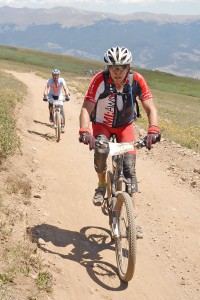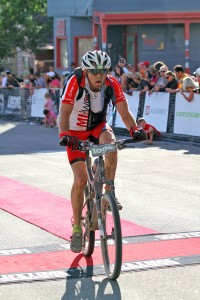New Poll Reveals Our Health Worries are Misguided: Heart Disease NOT Cancer Should be Our Primary Concern
Midlifers are focusing on the disease that gets the most attention rather than the one that is most likely to strike.
BY: KAREN SPRINGENJULY 18, 20112 COMMENTS
SOURCE: GETTY IMAGES
A new poll shows that we need to be worrying about our hearts and our body mass index much more than cancer. Yet, cancer leads our list of health concerns.
Heart disease is the biggest killer in the United States. Yet a new AP-LifeGoesStrong.com poll found that the disease that most concerns 47- to 65-year-olds is cancer.
After all, who can forget Farrah Fawcett, known for her blonde mane, shaving off her hair during chemotherapy treatment?
“Heart disease is much more invisible,” says Dr. Gordon F. Tomaselli, president of the American Heart Association and professor and director of the division of cardiology at the Johns Hopkins University School of Medicine.
One reason: patients keep their hair during treatment. Another: less press. How many midlifers remember that Jerry Garcia died from a heart attack? But cancer made front-page news when women such as Elizabeth Edwards and Christina Applegate were struggling with it. (Edwards died. Applegate had a double mastectomy and had a baby.)
The study found that 44 of respondents said cancer was the disease that worried them most, followed by memory loss (20 percent), heart problems (13 percent), diabetes (4 percent), and stroke (2 percent).
The death toll tells a different story: heart disease annually kills 616,067 Americans, cancer kills 562,875, chronic lower respiratory diseases kill 127,924, accidents kill 124,706, Alzheimer’s disease kills 74,632, and diabetes kills 71,382, according to figures from the National Center for Health Statistics.
Cancer may seem scarier partly because Americans fear losing their hair and too much weight. “Cancer is viewed as a consumptive disease that eats you away slowly,” says Tomaselli. “People don’t realize those outward appearances can change with heart disease, too.”
Heart disease patients can get edema (swelling), and they can lose their appetite, which can lead to the loss of lean body mass. “Perhaps we haven’t gotten the message out,” says Tomaselli. The new survey is, he says, “absolutely” a call to action.
People forget that heart failure can also shorten longevity and hurt quality of life, says Tomaselli.
Today doctors can alleviate symptoms of heart disease by inserting pacemakers and cardiac stents into patients. “We are very effective at treating heart disease,” says Tomaselli. “Treatment is never as good as prevention.”
The small number of Americans who said they worried about stroke surprises Tomaselli, who says AHA surveys typically find “stroke rivals cancer.”
People don’t realize that the lifetime risk of women getting coronary heart disease is one in three; for getting breast cancer it is one in eight, says Dr. Donald Lloyd-Jones, a cardiologist who is chairman of the Department of Preventive Medicine at Northwestern University’s Feinberg School of Medicine and was the lead author of the AHA’s strategic goals for 2020. And one in three women die from coronary heart disease whereas only one in 20 dies from breast cancer. So why do people worry so much more about cancer than heart disease? “Clearly there’s a disconnect,” says Lloyd-Jones.
For cardiovascular health, he says, Americans should stick to their ideal body weight, exercise, stop smoking, and keep cholesterol under 200 and blood pressure under 120 over 80, he says. He advises Americans to eat more fibrous foods, such as vegetables, which are filling but low in calories. It’s possible to be fit and fat — but better to be fit and lean, he says.
Americans often fail to realize that many patients who are treated for cancer may live the rest of their lives without the illness — but that is not the case with heart disease. People often don’t understand that while cancer is often curable, heart disease is not. “Once you have it, you can’t cure it,” says Lloyd-Jones.
Americans are gradually becoming more aware of heart disease, thanks to programs such as the AHA’s Go Red for Womencampaign. To learn more about the state of your heart health, take the My Life Check test.
A big part of the problem: Midlifers’ girth puts us at greater risk for heart disease (and for cancer). In the AP-LifeGoesStrong study, 36 percent of respondents provided height and weight figures that landed them in the “obese” category. (By contrast, only 26 percent of older respondents and 25 percent of younger ones were obese.) Another 36 percent of respondents met the criteria for “overweight,” and 27 percent met the criteria for “normal.”
The study indicates that we are trying to live a heart-healthy life: 63 percent of overweight respondents (and 49 percent of obese ones) said that in the past year, they have tried to improve their physical fitness by exercising regularly and 68 percent of the overweight respondents (and 72 percent of the obese ones) are on some type of diet.



